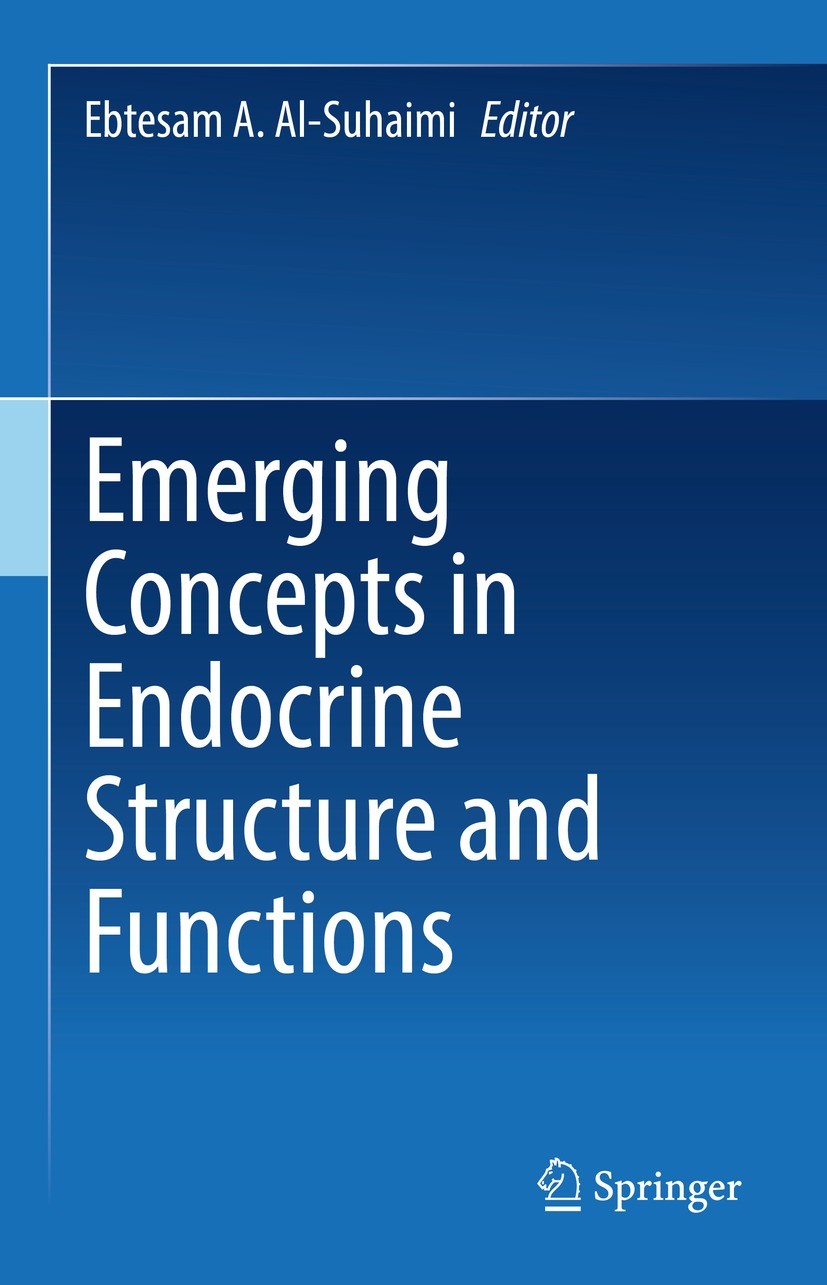| 书目名称 | Emerging Concepts in Endocrine Structure and Functions | | 编辑 | Ebtesam A. Al-Suhaimi | | 视频video | http://file.papertrans.cn/309/308215/308215.mp4 | | 概述 | Presents interaction of pineal and adrenal glands on circadian rhythm.Discusses the essential role of stem cells in endocrine system.Reviews biochemical and metabolic aspects of adipose tissue | | 图书封面 |  | | 描述 | .This book uniquely presents conceptual understanding as well as advancements in the field of endocrinology. It emphasizes the harmonization between the function and the structure of different endocrine glands in the body. The book‘s initial chapters introduce hormones‘ biological synthesis, structure, function, and signaling pathways. The subsequent chapters examine the functional relationship between hypothalamus and pituitary gland and its leading and regulating roles on other endocrine and non- endocrine organs. A separate chapter discusses the synergistic functions of adrenal glands and pineal gland in the circadian rhythm and analyze the role of corticoids in carbohydrate and mineral metabolism. Furthermore, the book addresses the role of growth hormones, prolactin, gonads regulating hormones, adrenocorticotropin, thyroid hormones, parathormone, gluco- and mineral corticoids, insulin and glucagon,. .Physiology of bone remodeling is presented with the role of parathyroid glands, C cells and vitamin D explaining the bone as an endocrine organ. The regulation of male and female reproductive functions is represented well. Lastly, the book reviews the novel endocrine role and met | | 出版日期 | Book 2022 | | 关键词 | Endocrine; Circadian rhythm; Stem cells; Growth hormone; Adipokines | | 版次 | 1 | | doi | https://doi.org/10.1007/978-981-16-9016-7 | | isbn_softcover | 978-981-16-9018-1 | | isbn_ebook | 978-981-16-9016-7 | | copyright | The Editor(s) (if applicable) and The Author(s), under exclusive license to Springer Nature Singapor |
The information of publication is updating

|
|
 |Archiver|手机版|小黑屋|
派博传思国际
( 京公网安备110108008328)
GMT+8, 2025-12-26 05:58
|Archiver|手机版|小黑屋|
派博传思国际
( 京公网安备110108008328)
GMT+8, 2025-12-26 05:58


